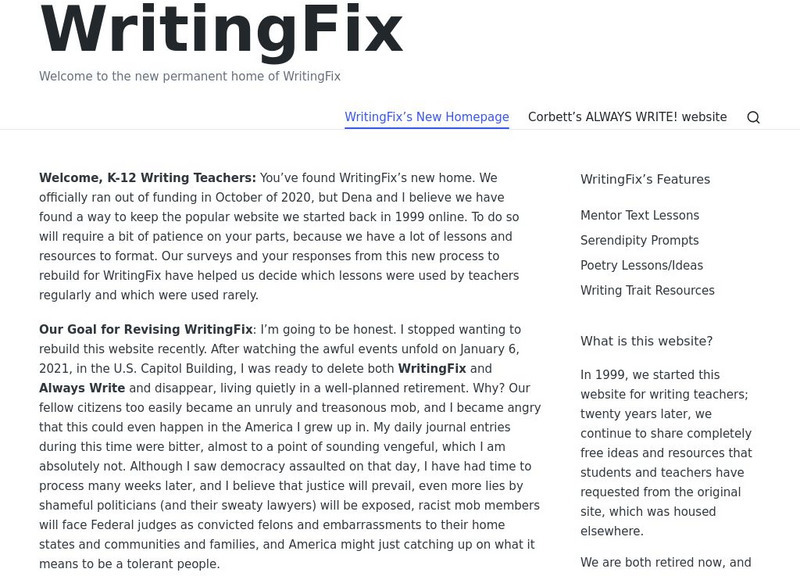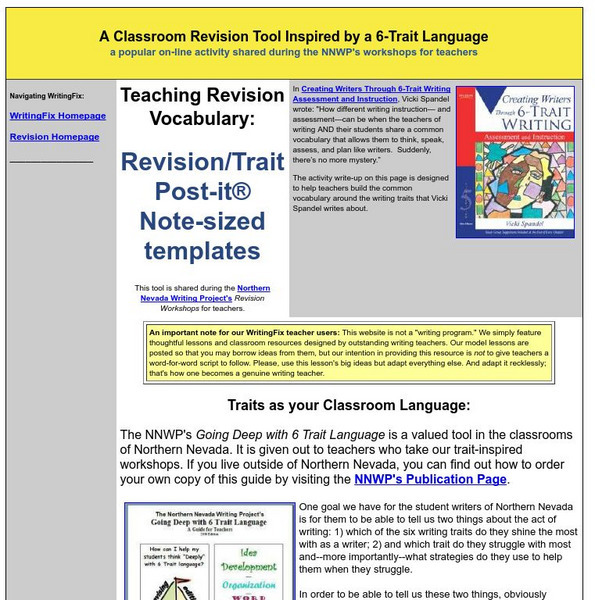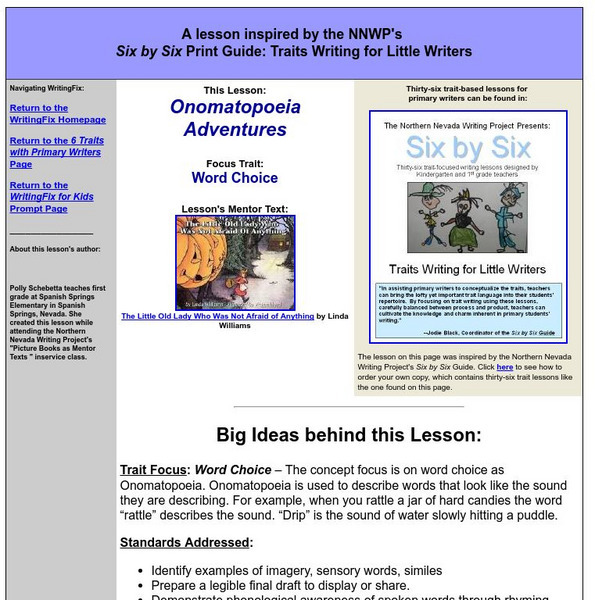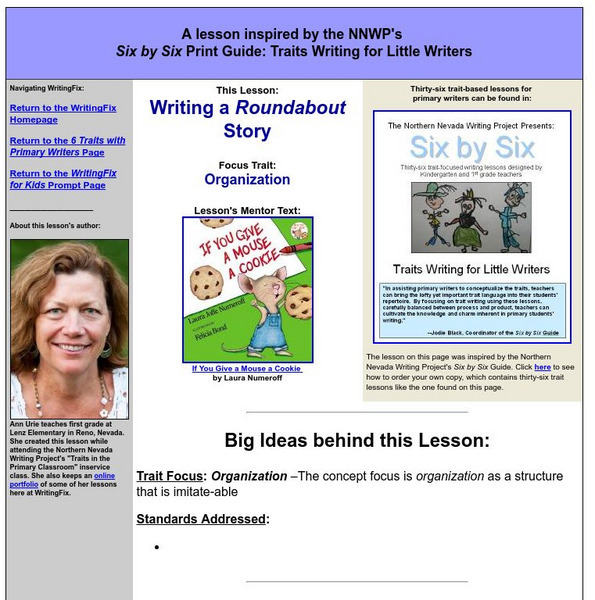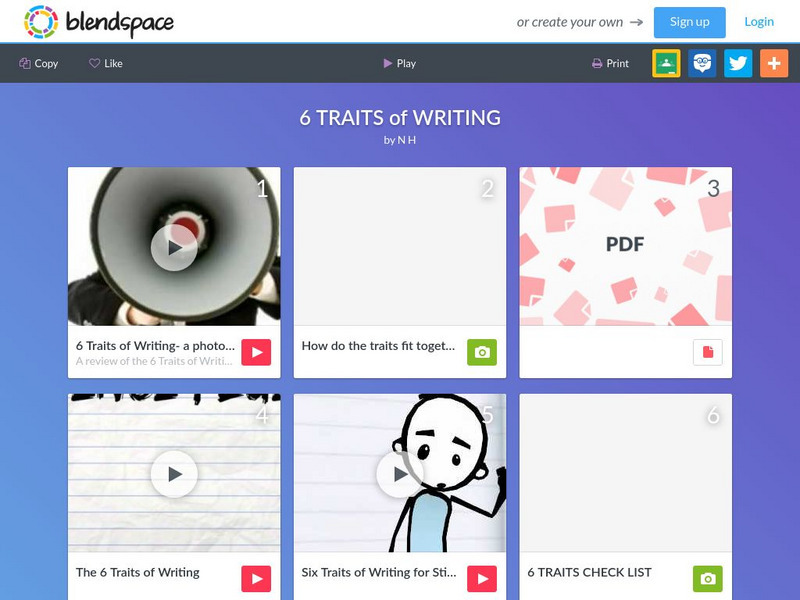Curated OER
Sorting
Students identify how objects can be sorted or classified for easy access. In this sorting activity, students will investigate how letters, numbers, and symbols are used in sorting and classifying.
Curated OER
Big Beans, Little Beans
Students measure and note the variation in the lengths of lima beans. They compare the growth rate of different sized beans.
Curated OER
Determining Importance
Students observe pieces of art and look for the principle story the artwork portrays. They compare the techniques artists and authors use to focus on and support these essential stories. They create a piece of art that portrays a given...
Curated OER
The Bard, the Globe, the Midsummer Night's Dream
Students complete a unit of lessons to learn about William Shakespeare and the Globe Theatre. In this William Shakespeare lesson, students complete 7 lessons of activities to study William Shakespeare, the Globe Theatre, and the play 'A...
Curated OER
Philanthropy, You, And Your World Lesson 1: Characterizing Philanthropic People
Students determine the meaning of philanthropy and list attributes of philanthropic people. They examine philanthropic acts of themselves and others using a song and Post-It note activity.
Curated OER
Tall, Dark, and Handsome
Seventh graders determine the characteristics of insect families after comparing human family characteristics. They categorize insects by looking for similar characteristics on image cards.
Curated OER
Lideable Differences
Fourth graders read, "Beat the Story Drum," and compare and contrast two of the characters using a Venn Diagram.
Curated OER
Community Celebrations
Sixth graders are introduced to cultural history and diversity that is present in the community in which they live by examining secular and sacred celebrations. Students create scrapbooks to chronicle their family's celebrations.
Curated OER
Kissing Coyotes
Fourth graders are read the book "Kissing Coyotes". During the story, they make predictions about what they believe might happen next. After the story, they create their own story using their imagination and draw illustrations.
Curated OER
Mariposas
Students examine how animals use camouflage for survival. In this investigative lesson students define vocabulary words and see how it is the environment that controls which adaptations will help in survival.
Curated OER
Still Life Predictions
Third graders read part of the story "Balto, the Dog Who Saved Nome". They make predictions about the story ending and identify the picture clues and textual information they used to form their predictions. They discuss the story's ending.
Curated OER
For Better or Worse: Cultural Exchange
Students participate in a cultural exchange program with a Native American school in Winnebago, Nebraska. They conduct research on a variety of Native American tribes, prepare a presentation that represents the culture of their school...
Curated OER
Go Yankees!
Young scholars use the internet to research the New York Yankees baseball team. After gathering their information, they discuss the challenges faced by the team and how they were overcome. They end the lesson by examining the math and...
Curated OER
Show Some Backbone and Teach Invertebrates
Fifth graders identify two similarities and two differences between two phyla, assign fictitious invertebrate to its phylum and explain why it belongs in that grouping, and construct member of given phylum and explain why it should be...
Curated OER
Poster Fitness
Seventh graders conduct internet research to gather information about physical fitness, and create individual posters to describe what personal fitness means to them. Student include both clipart and hand drawings to create collages.
Writing Fix
Writing Fix: Writing Fix Homepage
Have you ever needed someone to help you out with your writing? This site offers help to students and teachers. The lessons and resources are organized based on the 6 Writing Traits model. An especially interesting feature of the site is...
PBS
Pbs Teachers: Story Writing With Arthur
This series of 12 downloadable activities teach students some basics of story writing, using books or videos from the PBS "Arthur" series as a springboard. Activities include creating story maps, asking questions about characters and...
Writing Fix
Writing Fix: The Post It Writing Process
Based on Northern Nevada's 6-traits of writing, teachers can use a post-it note as a template for students to check their work throughout the writing process. Links to the 6-traits are included.
Other
Kim's Korner: Six Trait Analytic Writing Model
Check out this comprehensive website featuring ideas for teaching writing based on the six trait analytic writing model.
Writing Fix
Writing Fix: Lesson to Prepare for State Writing Test: Trait Rubics Vocabulary
This lesson focuses on teaching the vocabulary used in the rubrics for 4 of the 6 Traits of Writing. It requires students to learn the vocabulary used in the rubrics and to define the traits so they understand what is expected of them...
Writing Fix
Writing Fix: A Chapter Book Writing Lesson: Beyond Once Upon a Time
Students are so used to hearing stories that start with the words Once upon a time and when writing their own stories, they often begin with these same words or with variations like One day I. Inspired by the novel Crispin by Avi This...
Writing Fix
Writing Fix: Onomatopoeia Adventures
In this lesson plan, The Little Old Lady Who Was Not Afraid of Anything, by Linda Williams, is used as a mentor text to highlight the trait of word choice. Onamatopoeia is the focus content for this lesson. After the reading of the text,...
Writing Fix
Writing Fix: Writing a Roundabout Story
In this lesson plan, If You Give a Mouse a Cookie, by Laura Numeroff, is used as a mentor text to highlight the trait of organization. The content focus of the lesson is to highlight that authors' story structures can be imitated. Story...
TES Global
Blendspace: Traits of Writing
A six-part learning module with links to videos, images, and a rubric about the six traits of writing: ideas, voice, organization, word choice, fluency, and conventions.















